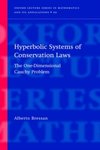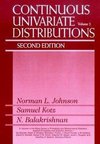
Topological groups
Source: Wikipedia. Pages: 43. Chapters: Adelic algebraic group, Almost periodic function, Amenable group, Bohr compactification, Cantor cube, Chabauty topology, Circle group, Compactly generated group, Compact group, Covering group, Free regular set, Fundamental... Viac o knihe
Produkt je dočasne nedostupný
16.46 €
bežná cena: 18.70 €
O knihe
Source: Wikipedia. Pages: 43. Chapters: Adelic algebraic group, Almost periodic function, Amenable group, Bohr compactification, Cantor cube, Chabauty topology, Circle group, Compactly generated group, Compact group, Covering group, Free regular set, Fundamental domain, Haar measure, Hilbert-Smith conjecture, Homeomorphism group, Homogeneous space, Identity component, Kazhdan's property (T), Kronecker's theorem, Locally compact group, Locally profinite group, Loop group, Mautner's lemma, Maximal compact subgroup, Monothetic group, Noncommutative harmonic analysis, No small subgroup, One-parameter group, Peter-Weyl theorem, Pontryagin duality, Principal homogeneous space, Pro-p group, Properly discontinuous action, Prosolvable group, Restricted product, Schwartz-Bruhat function, Solenoid (mathematics), System of imprimitivity, Tannaka-Krein duality, Topological abelian group, Topological group, Topological semigroup, Totally disconnected group, Von Neumann conjecture. Excerpt: In mathematics, specifically in harmonic analysis and the theory of topological groups, Pontryagin duality explains the general properties of the Fourier transform on locally compact groups, such as R, the circle or finite cyclic groups. The Pontryagin duality theorem itself states that locally compact groups identify naturally with their bidual. The subject is named after Lev Semenovich Pontryagin who laid down the foundations for the theory of locally compact abelian groups and their duality during his early mathematical works in 1934. Pontryagin's treatment relied on the group being second-countable and either compact or discrete. This was improved to cover the general locally compact abelian groups by Egbert van Kampen in 1935 and André Weil in 1940. Pontryagin duality places in a unified context a number of observations about functions on the real line or on finite abelian groups: The theory, introduced by Lev Pontryagin and combined with Haar measure introduced by John von Neumann, André Weil and others depends on the theory of the dual group of a locally compact abelian group. It is analogous to the dual vector space of a vector space: a finite-dimensional vector space V and its dual vector space V* are not naturally isomorphic, but their endomorphism algebras (matrix algebras) are: End(V) ¿ End(V*), via the transpose. Similarly, a group G and its dual group G^ are not in general isomorphic, but their group algebras are: C(G) ¿ C(G^) via the Fourier transform, though one must carefully define these algebras analytically. More categorically, this is not just an isomorphism of endomorphism algebras, but an isomorphism of categories - see categorical considerations. A topological group is locally compact if and only if the identity e of the group has a compact neighborhood. This means that there is some open set V containing e whose closure is compact in the topology of G. Examples of locally compact abelian groups are: If G is a locally compact abelian group, a
- Vydavateľstvo: Books LLC, Reference Series
- Formát: Paperback
- Jazyk:
- ISBN: 9781156639559


 Anglický jazyk
Anglický jazyk 









